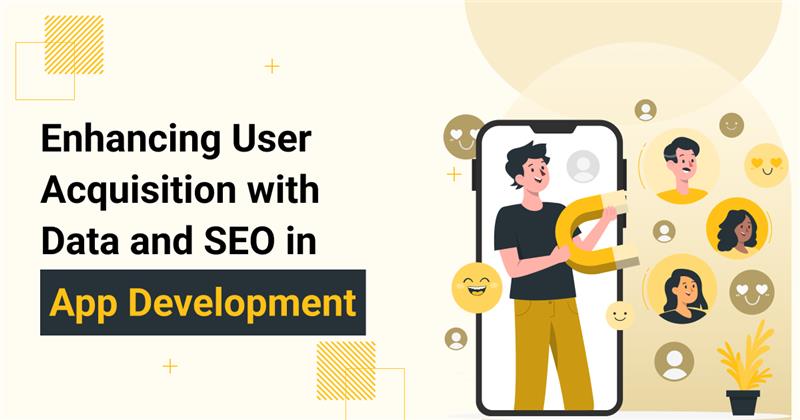AI Integration in Educational Apps: Enhancing Personalization and Accessibility
Do you remember what learning apps used to be like? It was simply flashcards and quizzes, but those days are gone. In the modern era, AI is driving apps that can absorb what you learned, upgrade based on your strengths and weaknesses, and even anticipate what subject will be problematic next. Research and markets say the global AI in education market will increase from $3.7 billion in 2023 to $10.4 billion by 2028, confirming this technology isn’t just a fad. Based on this, we’re now discussing apps that allow you to learn what’s useful to you and make education more accessible than ever. Let’s break it down.
The Personalization Revolution
Education is one size and doesn’t fit all, right? Everyone learns differently. That is where AI comes in and contextually customizes learning experiences to the learner’s needs. Duolingo’s AI, for instance, takes you through spaced repetition and personalized practice to crunch new vocabulary at your speed. But it doesn’t stop there. Future lessons are fine-tuned by AI algorithms that analyze user behavior and how long you stay on a certain question or concept. McKinsey reports that personalized learning with AI can increase retention by up to 25% and reduce average learning time by 40%. What if an app saw that you always got algebra wrong and loved geometry? Well, it’d prioritize geeking out on those bad geometry equations, so you don’t waste time with things you’ve done before. The kind of customization that this offers to students and lifelong learners is game-changing.
Expanding Possibility for Remote Work
AI in educational apps isn’t just doing good by helping students and opening doors to remote work opportunities such as tutoring, content creation, or writing research papers for payment. Nowadays, some platforms combine AI tools to enable professionals to research, edit, and refine their work efficiently. Consequently, apps like Grammarly and ChatGPT help writers draft beautiful, quality content, and writing becomes less tedious and more achievable in chasing the client’s expectations and deadlines. With remote writing jobs increasing 35 percent in the last year, a large proportion is written for education-related content, according to Upwork’s 2024 freelance insights report. It becomes simpler for you whether you are a teacher wanting some side income or a freelancer trying your hand in educational niches, and AI helps you pull off the best work.
Accessibility Like Never Before
Accessibility to educational technology is a huge deal, so let’s not forget that. People who otherwise might not have had access to a good quality education are opening doors to themselves with educational apps. Take Microsoft Seeing AI and Voice Dream Reader as examples, which employ AI to enable visually impaired users to read text and describe the environment. It’s not just about leveling the playing field. They change it. Moreover, in partnership with OpenAI, Khan Academy has created high-quality AI tutors that can answer complex questions, demonstrate concepts, and explain them in multiple languages. The report further states that these tools have enabled further access to education for no less than 250 million students across the world in remote areas. This democratization of education means that people with a smartphone and the Internet have access to learning from anyone in any part of this world, at any place.
Bridging Language Barriers
As for languages, AI has skyrocketed to become the language barrier hero. Now, educational apps with AI integration, like Babbel or Google Translate, use neural machine translation, and translations are smoother and more context aware. The whole sentence is brought in for analysis by neural networks, translating much better than word-for-word. This doesn’t just help with learning new languages. It also allows us to access resources in other languages. Thus, for example, non-English speaking students in other countries can have access to high-quality academic materials originally written in English or other languages. Statista’s 2024 study stated that each year, there are over 1 billion AI translation tool users worldwide, and they play a great role in education and everyday life. And this isn’t an exaggeration – the world is becoming smaller and more connected thanks to AI.
Real-World Examples
Are you still not convinced? Check these out:
- Photomath: Struggling with math? Photomath will take a picture of the equation and solve it. It will even show you step-by-step solutions. This is pretty much equivalent to having a math tutor in your pocket. Instead of just spitting out answers, the app’s AI teaches you how to do the process yourself and gain a better understanding.
- Quizlet: Their smart study plans are AI-powered, analyzing your progress to better help you study more efficiently for tests. Quizlet uses an AI with over 600 million monthly users so you can study smarter, and they focus on your weak areas, which are the more productive study sessions.
- Edmodo: As a hit among teachers, this platform allows teachers to suggest resources according to students’ performance and feedback and use AI. At 100 million global users, Edmodo is a testament to the power of AI to bridge the gap between teaching and learning, offering just the right kind of content to achieve classroom results.
Challenges We Can’t Ignore
It’s not all sunshine and rainbows. To be fair, there are challenges, too. The number one issue we should emphasize is data privacy. App data can be a very large spiel, and if its safety isn’t prioritized, it can also be quite serious. In a report from the International Data Corporation (IDC) published in 2023, 40 percent of users are apprehensive about AI tools because of privacy concerns. And then, there’s also the question of accessibility in underserved areas where the Internet and devices might not be easily accessible. According to Statista, in 2024, 37 percent of the global population doesn’t have the Internet, meaning that for AI innovations to flourish, they must be able to close digital divides.
Conclusion
It isn’t just buzzwords; AI is a game changer, making inclusive learning through AI such but different. The possibilities are endless – personalized pathways or even breaking accessibility barriers. Of course, there are hurdles, but if you strike the right balance, AI could be the way for education to become universal and inclusive. That’s why, the next time you’re using an app to learn a new skill or crack a subject, remember that there is a lot of smart tech at work that keeps it together. Pretty cool, right?




